Grammar can seem daunting, but it doesn’t have to be! This guide breaks down 10 simple tricks that will significantly improve your writing skills. You’ll learn practical techniques to boost your confidence and clarity.
Whether you’re a student, a professional, or simply someone who wants to improve their communication, these tips are for you. We’ll cover common grammar pitfalls and offer straightforward solutions. Get ready to enhance your writing!
-
Mastering Subject-Verb Agreement
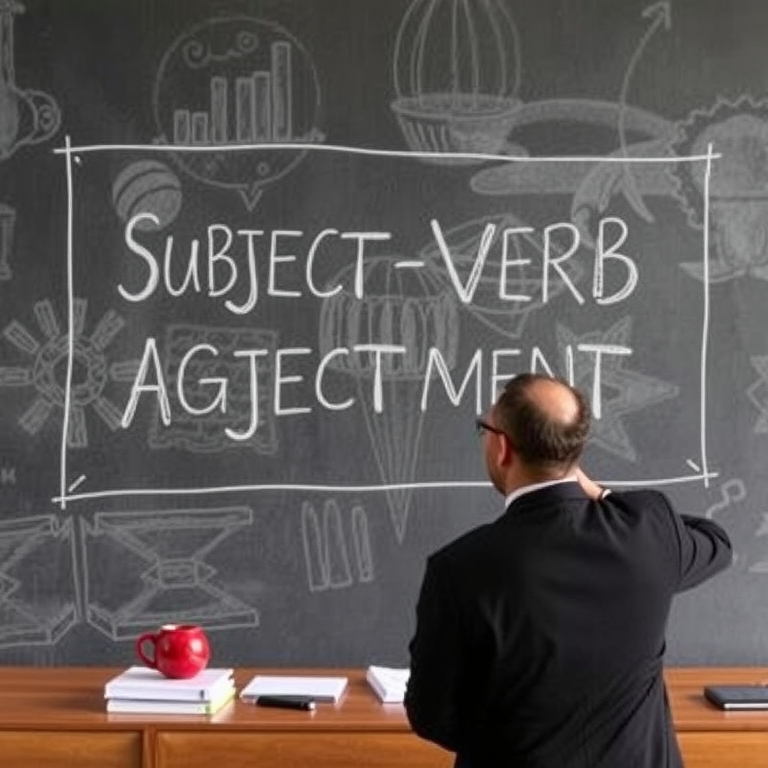
Mastering Subject-Verb Agreement Subject-verb agreement is fundamental to clear writing. Singular subjects take singular verbs (e.g., ‘The dog barks’). Plural subjects take plural verbs (e.g., ‘The dogs bark’). Remember to check the subject’s number carefully before choosing a verb.
Tricky situations arise with collective nouns (e.g., ‘team,’ ‘family’). These can be singular or plural depending on context. ‘The team plays well’ (team acts as a unit), but ‘The team are arguing amongst themselves’ (team members are highlighted). Pay close attention to the intended meaning.
Intervening phrases often confuse beginners. The verb agrees with the subject, not the words in between. For example, in ‘The basket of apples is ripe,’ ‘basket’ is the subject, not ‘apples’. Ignore extra phrases when determining subject-verb agreement.
Indefinite pronouns like ‘everyone,’ ‘someone,’ and ‘anyone’ are always singular, thus taking singular verbs. However, compound subjects joined by ‘and’ usually take plural verbs. Exceptions occur with closely related items that function as a single unit (e.g., ‘peanut butter and jelly is my favorite snack’).
-
Understanding Commas
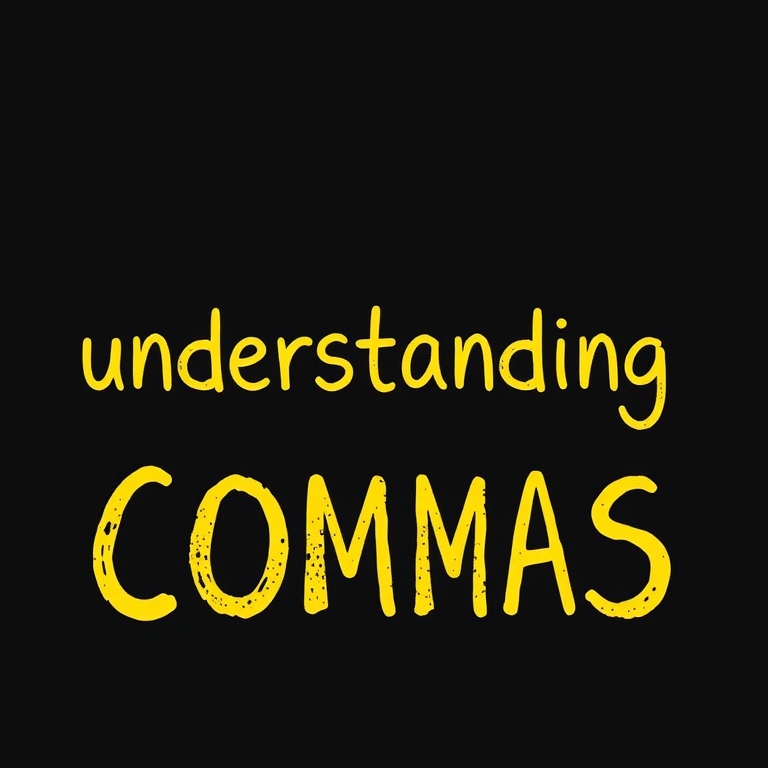
Understanding Commas Commas are essential for clear writing. They separate items in a list: apples, bananas, and oranges. Use them after introductory phrases like ‘however,’ or ‘in addition.’ Mastering commas enhances readability.
Avoid comma splices, which occur when you join two independent clauses with just a comma. Instead, use a semicolon, a conjunction (like ‘and’ or ‘but’), or separate them into two sentences. This improves sentence structure and clarity significantly.
Commas set off nonessential phrases or clauses that add extra information but aren’t crucial to the sentence’s meaning. For example, ‘My dog, a fluffy golden retriever, loves to play fetch.’ But ‘My dog loves to play fetch’ remains grammatically correct without the extra description.
Practice regularly by reading and analyzing how commas are used in different texts. Pay close attention to the punctuation in well-written books and articles. The more you see correct comma usage, the better you’ll understand and apply the rules yourself.
-
Pronoun Agreement
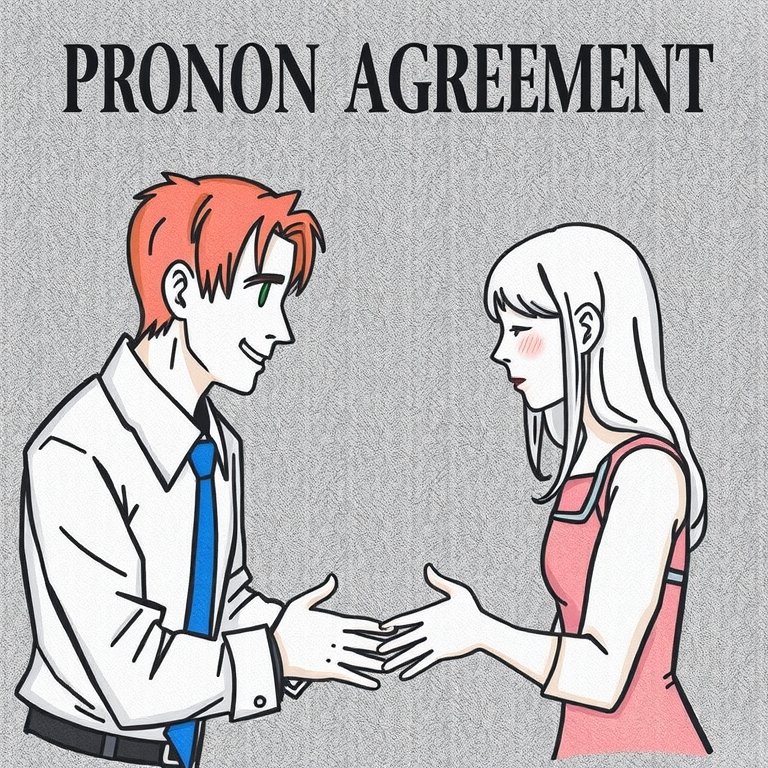
Pronoun Agreement Pronoun agreement is a fundamental grammar rule ensuring pronouns match their antecedents (the nouns they replace) in number and gender. For example, ‘The dog wagged its tail’ is correct because ‘its’ agrees with the singular ‘dog’. Incorrect examples would be ‘The dogs wagged their tail’ or ‘The dog wagged her tail’. Paying attention to singular versus plural is key.
Collective nouns like ‘team’ or ‘family’ can be tricky. They can be singular (‘The team played its best game’) or plural (‘The family have different opinions’) depending on whether you’re focusing on the group as a unit or individual members. Consider whether the focus is on the group acting as one or as many individual people to determine the appropriate pronoun.
When dealing with indefinite pronouns such as ‘everyone,’ ‘someone,’ or ‘anyone,’ use singular pronouns like ‘his or her’ or ‘their’ (depending on the context and your preferred style guide). Avoid using ‘they’ in formal writing unless you are comfortable with the evolving rules on gender-neutral pronouns. Remember, consistency is key for clarity.
Compound subjects joined by ‘and’ always take a plural pronoun. However, subjects joined by ‘or’ or ‘nor’ take a pronoun that agrees with the closest subject. For instance, ‘Neither the cat nor the dogs ate their food’ is correct, while ‘Neither the dogs nor the cat ate its food’ is also correct, depending on the emphasis.
-
Correct Tense Usage
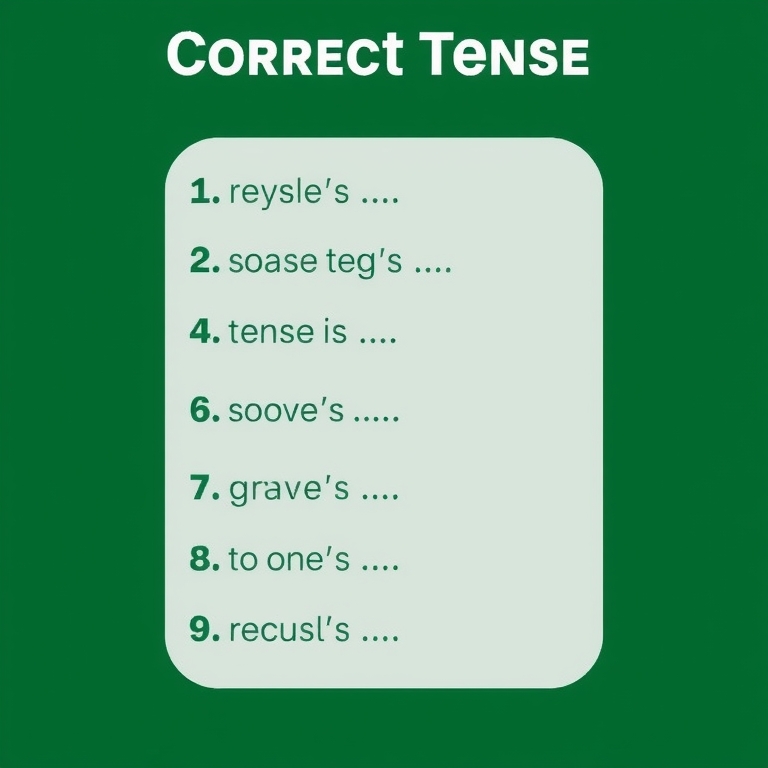
Correct Tense Usage Mastering verb tenses can dramatically improve your writing clarity. Start by identifying the main action of your sentence. Then, choose the tense that accurately reflects when that action occurred: past, present, or future. Simple present tense (‘I walk’) describes habitual actions, while simple past (‘I walked’) describes completed actions.
Practice distinguishing between present perfect (‘I have walked’) and past perfect (‘I had walked’). Present perfect indicates an action completed at an unspecified time before now. Past perfect shows an action completed *before* another action in the past. Use these tenses correctly to show the order of events clearly and concisely.
Future tenses can be tricky! ‘Will walk’ expresses a simple future action. ‘Going to walk’ suggests a planned future action. Consider the nuance you want to convey when selecting between these options. Careful consideration of tense will strengthen your writing.
To improve, read widely and pay attention to how authors use tense. Practice writing sentences using different tenses. Try rewriting sentences you’ve already written, experimenting with different tense options. Consistent practice is key to mastering this fundamental grammar skill.
-
Avoiding Run-on Sentences
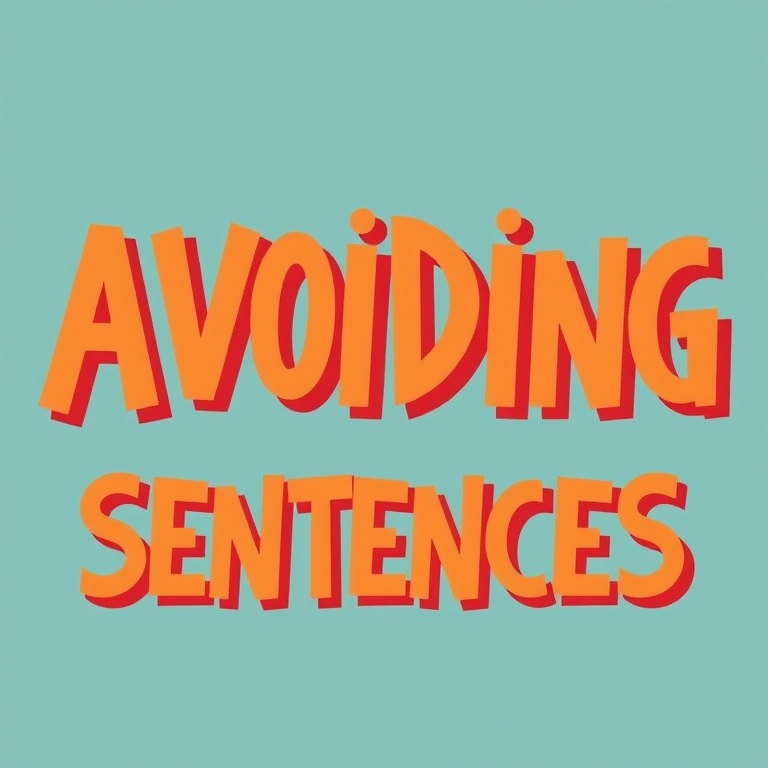
Avoiding Run-on Sentences Run-on sentences, also known as fused sentences, occur when two or more independent clauses are joined without proper punctuation or conjunctions. This creates confusing and hard-to-read text. To fix this, simply separate the clauses with a period, creating two distinct sentences.
Alternatively, you can use a semicolon (;) to join two closely related independent clauses. Ensure both clauses are complete sentences before using a semicolon. For example: ‘The sun was setting; the birds flew to their nests.’
Another solution is to employ a coordinating conjunction (FANBOYS: for, and, nor, but, or, yet, so) along with a comma. This connects the clauses smoothly. Remember to place the comma *before* the conjunction.
Finally, consider breaking a long sentence into shorter, more manageable ones. This improves readability and clarity. Short sentences are often more impactful and easier to understand than long, complicated ones.
-
Using Apostrophes Correctly
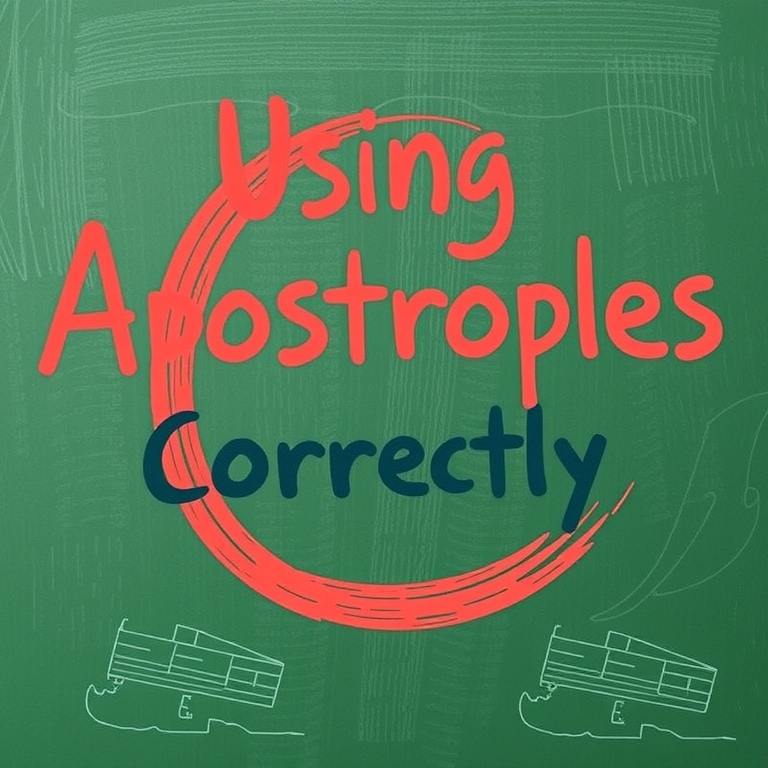
Using Apostrophes Correctly Apostrophes show possession. For singular nouns, add an apostrophe and an ‘s’ (cat’s toy). If a singular noun already ends in ‘s’, you can add just an apostrophe (boss’s office) or an apostrophe and an ‘s’ (Charles’s car). Choose one style and be consistent.
Plural nouns ending in ‘s’ take only an apostrophe (dogs’ park). If the plural noun doesn’t end in ‘s’, add an apostrophe and an ‘s’ (children’s playground). Remember to place the apostrophe correctly to avoid confusion; incorrect placement changes meaning drastically.
Contractions use apostrophes to replace missing letters (can’t, it’s, doesn’t). Pay close attention to the correct contraction; ‘its’ shows possession, while ‘it’s’ is a contraction of ‘it is’. Practice using contractions correctly, and it’ll improve your writing.
It’s helpful to read your writing aloud to catch apostrophe errors. Focus on each word individually to spot potential mistakes; this improves proofreading skills. Consistent practice leads to greater accuracy; master this small detail for a big impact on your writing clarity.
-
Understanding Modifiers

Understanding Modifiers Modifiers add details to nouns and verbs, making your writing more vivid. Adjectives modify nouns (e.g., ‘the *big* dog’). Adverbs modify verbs, adjectives, or other adverbs (e.g., ‘he ran *quickly*’, ‘*very* big’, ‘ran *quickly* and *quietly*’). Mastering modifiers enhances sentence clarity and impact.
Vary your sentence structure by placing modifiers in different positions. A modifier before the noun is typical (‘the *fluffy* cat’). However, placing it after creates emphasis (‘the cat, *fluffy* and playful, purred’). Experimenting adds sophistication to your style.
Avoid dangling modifiers, which attach to the wrong words, leading to confusion (e.g., ‘Running down the street, the house seemed to shake’ should be ‘Running down the street, I saw the house shake’). Ensure modifiers directly relate to the intended word for grammatical accuracy.
Practice identifying modifiers in your reading. Analyzing their placement and function will improve your understanding. Try rewriting sentences, shifting modifiers to observe how meaning changes. Consistent practice builds mastery and improves your writing confidence.
-
Parallel Structure

Parallel Structure Parallel structure means using the same grammatical form to express similar ideas. This creates balance and clarity in your writing. For example, instead of saying ‘I like swimming, to bike, and hiking,’ try ‘I like swimming, biking, and hiking.’ Notice how each activity is now a gerund.
Another common parallel structure error involves comparing unlike things. Don’t compare apples and oranges (literally!). Ensure the items you’re comparing are of the same grammatical type. Incorrect: ‘She is intelligent and runs fast.’ Correct: ‘She is intelligent and fast.’
Vary your parallel structure to keep your writing interesting. You can use parallel nouns, verbs, adjectives, or phrases. For example, instead of just listing nouns, try using a series of parallel clauses beginning with verbs.
Mastering parallel structure dramatically improves your writing’s flow and readability. Practice identifying and correcting parallel structure errors in your own writing and in the writing of others. Remember to check for consistency in grammatical form. By making this a habit, you’ll soon see a significant enhancement in your sentences.
-
Effective Word Choice
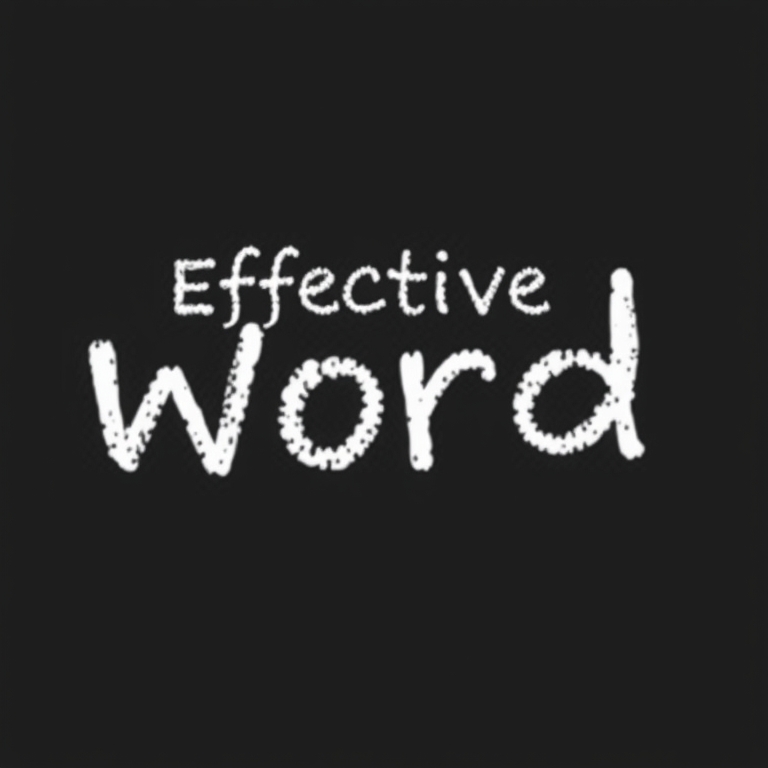
Effective Word Choice Choosing the right words significantly impacts your writing’s impact. Use precise language to convey your intended meaning.
Avoid vague or overly complicated words when simpler options exist. Select words that are appropriate for your audience and purpose.
Tip: Use a thesaurus to find synonyms and explore alternative word choices. Consider the context and nuance of your writing.
-
Proofreading and Editing

Proofreading and Editing Proofreading and editing are crucial final steps. They help catch errors you might have missed during writing.
Take your time to thoroughly review your work. Read it aloud to identify awkward phrasing or grammatical errors.
Tip: Use grammar checkers and style guides to help with proofreading. Consider asking a friend or colleague to proofread your work as well.
Editor’s Recommendations
- Use online grammar tools regularly.
- Read widely to observe grammar in action.
- Practice writing every day!
Conclusion
Improving your grammar takes time and practice, but the results are well worth the effort! By consistently applying these tricks, you’ll become a more confident and effective writer.
Remember, even experienced writers make grammar mistakes. The key is to learn from those mistakes and continually strive for improvement.
